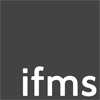Kleine Zeitung embraces 3 key changes to transform digital approach
SUMMARY: Austria’s most successful regional news media company transformed a brand with 110 years of history into a regionally focused newsroom with fresh perspective and a multi-media mindset.
Kleine Zeitung recently underwent a digital transformation project that led to deep editorial transformation and a company-wide cultural shift.
The result is a more regionally focused editorial strategy and a re-vamped newsroom that’s nimble enough to keep better pace with interests and demands of the news media company’s digital audience.
Underlying this successful transformation were three broad-sweeping, fundamental changes:
1. Getting to know its audience, properly.
At the outset “…we had to ask ourselves: Who are the people we are engaging with every day? What are the expectations for the future?” said Kleine Zeitung Commercial Director Gerhard Valeskini. “The answer was clear: We needed to further develop the brand.”

An extensive market insight process followed. It focused on finding out not what customer wanted to read, but rather discovering what is important to them, what makes their lives easier or better, and what are they passionate about.
This led to Kleine Zeitung’s multi-platform “regional first” concept. The company defined six core brand values, which became part of a brand handbook that each member of staff is trained in, ensuring quality levels are the same on all platforms.
This material underpins all planning and creative processes in the newsroom, and all areas of the company now have a shared view of the audience, who they are, what they want, and how Kleine Zeitung uniquely can deliver that.
2. Starting from the small platform and working up.
It’s all too common to see media houses start strategic processes with print first. Kleine Zeitung took a new approach for a multi-platform re-launch (which traditionally would have started with the print product and then progress down through the Web site, the tablet, and finally the mobile).
Since mobile was determined to be the platform of the future, staff instead worked from the smallest platform up.
“We didn’t want a Swiss Army knife app that could do everything. The Kleine Zeitung stands first and foremost for regional news, and that is what the smartphone app was for,” explained Kleine Zeitung Head of Digital Uwe Sommersguter. “We didn’t need to take the time and energy to list the pharmacies, restaurants, and the like in our region. These could easily be found on other apps.”
Instead, the company’s digital product strategies were developed to harmonise with the order, methods, times of day, and relationships readers have with their devices, often entering the story via mobile, and in some cases ending with print. This, of course, led to significant changes in workflow.
3. Tuning editorial workflow and roles to audience behaviour.
Kleine Zeitung’s workflow became more attuned to audience behaviour, with editorial deadlines set throughout the day for the various platforms. Newsroom shifts have been synchronised to ensure there is always someone in charge on the editorial desk who can make decisions for audience-focused planning and execution.
This change demanded new roles in the newsroom, such as creating a planning chief. Planning is the most important part of the newsroom process, since the majority of content is foreseeable and non-exclusive.

Kleine Zeitung Planning Chief Elisabeth Zankel describes how she works in tandem with the day chief, and has to direct and coordinate things before they are ready to be worked on:
“You need commitment from everyone involved, from the editor-in-chief down to the staff of the individual sections. We have an important planning conference once a week that includes marketing, reader promotion, production. We share feedback and discuss what is coming up. Kleine Zeitung is not just the newsroom.”
With these three significant changes, among others, recent results have seen content quality improve on all platforms with visitor figures rising by nearly one-third, page views by more than 40%, and the foundations firmly laid for the next big move: paid content.
To learn more about Kleine Zeitung’s digital strategy, contact the Institute for Media Strategies for the detailed case study. ♦︎
